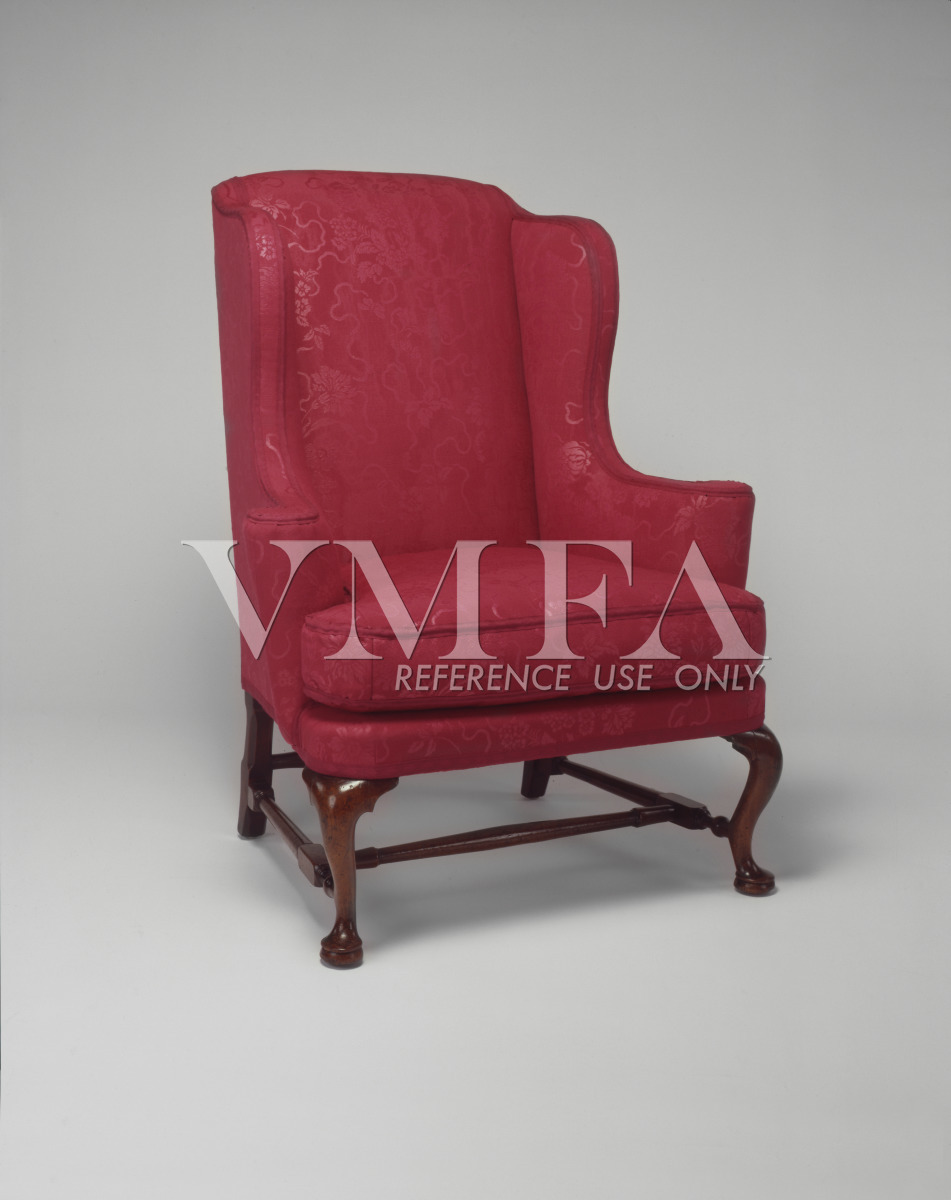
Easy Chair (Primary Title)
Unknown (Artist)
Easy chairs, with their distinctive high backs and enclosed sides, were designed to shield the sitter from cold drafts. Not surprisingly, they became one of the colonial era’s most popular seating forms. The heavy instrument in upholstery, however, made them also among the most costly. The construction of such a substantial piece as this well-proportioned, Queen Anne-style chair fell to various craftsmen: a cabinetmaker produced its wood frame, and an upholsterer covered it to suit the client’s wishes – typically using fabric imported from England.
The original upholstery for this chair has long disappeared. The present “show” cover replicates a surviving 1770 fabric in the “Aberton” pattern. Specially commissioned by VMFA, it was hand woven in Scotland, moreened (given a wavy surface) in Ireland, and stamped with a floral pattern in France. The cording tape was woven and dyed separately. The museum’s conservation department attached the new upholstery using a noninvasive technique to protect the now-fragile original frame.
Some object records are not complete and do not reflect VMFA's full and current knowledge. VMFA makes routine updates as records are reviewed and enhanced.

